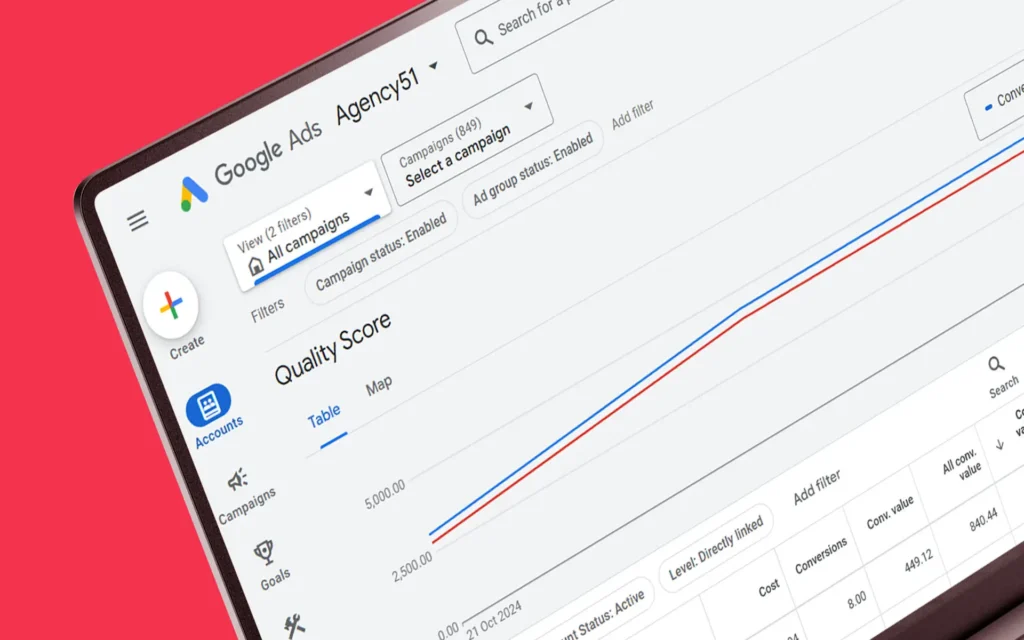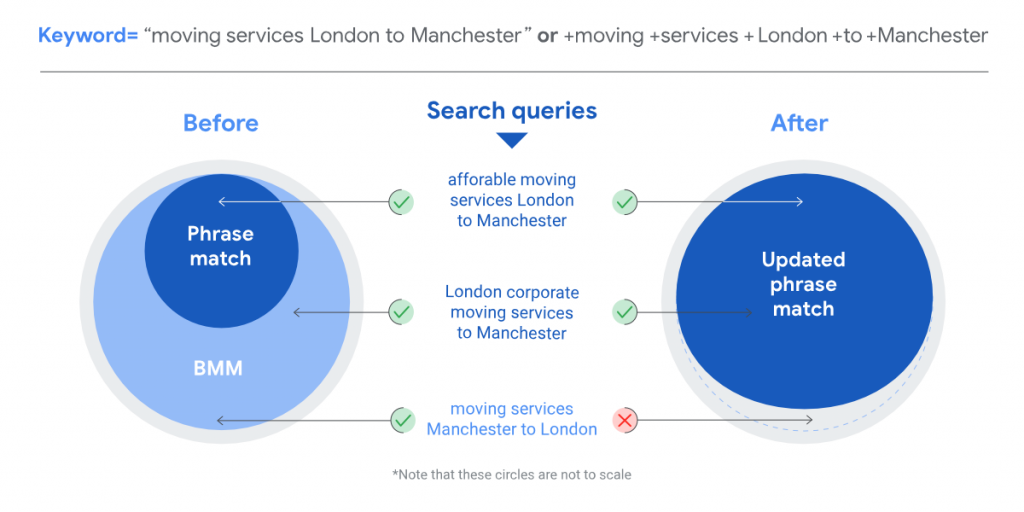For many businesses and digital marketers Google Ads present an eternal mystery. They know ads can drive profitable growth but they can’t keep up with the rules that govern these powerful tools. But Google Ads don’t have to be that complex. In fact, there are a few simple steps you can take to drive your ads to success. Enter Quality Score.
If you manage a Google Ads account, then you’ll know all too well that one of the most crucial aspects to focus on when optimising Google Ads campaigns is the Quality Score. A higher Quality Score doesn’t just enhance ad performance but can also significantly lower costs and improve return on investment (ROI). If you can master this, then you’re well on your way to producing some top performing Google Ads.
If you’re struggling to improve your Quality Score, or simply want to know how it works, then we’ve got you covered. In this article we’ll lay out what the Quality Score is, how it’s calculated, and actionable strategies you can take to improve it.
Understanding Google Ads Quality Score
The Quality Score is Google’s way of measuring the relevance and quality of your keywords, ads, and landing pages in relation to each other and to the user’s intent. It’s rated on a scale of one to ten, with ten being the highest, and is based on three main factors:
- Expected click-through rate (CTR): a prediction of how likely users are to click on your ad
- Ad relevance: the degree to which your ad copy matches the intent of the keyword
- Landing page experience: how useful and relevant the landing page is to users who click through
A high Quality Score indicates that Google finds your ads valuable to users, and they reward this with better ad placements and potentially lower costs.

The Impact of Quality Score on PPC Campaigns
Quality Score is more than just a metric – it directly influences cost-per-click (CPC) and ad placement. Google Ads uses an auction-based system, where higher Quality Scores help ads rank higher on the search engine results page (SERP) for less money. This leads to:
- Lower CPC and better ad positioning
- Improved impression share and higher chances of reaching the target audience
- Enhanced overall ROI
- More economical use of your overall budget
Key Strategies to Improve Google Ads Quality Score
If you’re a marketer who specialises in PPC, you’re likely to manage campaigns across various industries and will need effective strategies to boost Quality Scores across the board. Here are a few tips you can use for your next ad:
Optimise Ad Relevance
- Conduct deep keyword research: align keywords with your audience’s search intent, which means targeting terms your ideal clients are using. Tools like Google’s Keyword Planner or third-party options (Ahrefs or SEMrush for example) can help identify high-value keywords
- Group similar keywords together: by tightly organising ad groups, you can craft highly specific ad copy that directly speaks to each keyword group. For example, separating keywords by product types or service categories allows for tailored ads
- Use dynamic keyword insertion (DKI): DKI can personalise ads by matching them closely to search terms, but use it cautiously. DKI is best when the search terms are tightly controlled to prevent awkward phrasing in ads
Enhance Ad Copy for Better CTR
- Craft compelling headlines: test various headline structures, such as asking questions, using statistics, or adding urgency to see what drives clicks. For instance, a ‘limited offer’ message can be impactful if the client has promotions
- Incorporate clear calls to action (CTAs): encourage users to take action with straightforward calls to action, for example ‘book now or ‘learn more’. It’s also helpful to tie CTAs with the user intent identified in the keyword research
- A/B Test Ad Variations: regularly testing and trying new versions of ad copy helps you find the most compelling messaging. Optimise based on CTRs and other performance metrics to maximise Quality Score
Improve Landing Page Experience
- Ensure mobile responsiveness: mobile-first design is essential, as many users will access landing pages via smartphones. Check loading speed and make sure all elements – for example forms, buttons – function seamlessly on mobile devices
- Optimise for relevance and value: the landing page should clearly address the search intent. If a user clicks an ad for “affordable web design services,” ensure that the landing page highlights affordability, pricing options, and benefits
- Enhance page speed: use tools like Google PageSpeed Insights to identify and resolve issues slowing down the landing page. Even minor speed improvements can have a positive impact on Quality Score and conversions
- Simplify navigation: make sure that your user experience is straightforward. The faster users find the information they want, the more likely they will stay and convert
Boost Expected CTR by Matching User Intent
- Align ad content with seasonal trends: depending on the business, seasonal adjustments can keep the content fresh and relevant. For example, if you’re in ecommerce, refreshing ads for the holiday season can drive engagement
- Analyse search terms and refine negative keywords: regularly review the Search Terms report to see which keywords trigger your ads and add negative keywords as needed. This helps filter out irrelevant traffic, which could otherwise drag down the CTR and Quality Score
Monitoring and Adapting for Ongoing Success
Improving and maintaining Quality Score is an ongoing process, requiring regular performance checks and adaptations based on results. Here are some additional tips for ongoing success:
- Track Quality Score progress: regularly monitor Quality Scores at the keyword level to identify areas for improvement. This can help uncover specific keywords or ad groups that may need adjustments
- Review competitor ads: conducting competitor analysis on top-ranking ads can offer insights into high-performing headlines, keywords, and calls to action, which in turn provides ideas for refinement
- Stay updated on Google Ads best practices: Google often updates its algorithms and best practices, so staying informed on the latest changes is key. The official Google Ads blog or resources like the Google Skillshop offer valuable insights
In Conclusion
Improving Google Ads Quality Score is one of the most effective ways to enhance campaign performance, boost visibility, and reduce costs for clients or for yourself. By fine-tuning ad relevance, enhancing CTR, and creating a smooth, relevant landing page experience, PPC specialists can ensure their campaigns are competitive, cost-effective, and profitable.
Google Ads account managers can leverage Quality Score as a powerful tool in delivering exceptional results but it takes a commitment to continuous improvement to see real results.
Do you need help finetuning your Google Ads? Or maybe you need help cutting through the complexity to get real results? We help businesses harness the power of Google Ads day in, day out, so get in touch.














